22 start with I start with I

From subarctic tundra to equatorial rainforest, deep in the soil and at the tip of the highest tree, ants are found the world over. This book, by the world’s leading ant taxonomist, offers a definitive guide for identifying these ubiquitous insects.
Barry Bolton provides identification keys to all the living ant subfamilies and genera, presented in alphabetical order and separated by zoogeographical region. Designed for professional and amateur myrmecologists alike, this guide is as accessible as it is comprehensive, including information on the function and use of identification keys, instructions for preparing specimens for examination, and an illustrated glossary of morphological terms. Over 500 scanning electron microscope photographs illustrate the taxonomic keys.
Bolton introduces each subfamily with a diagnosis of the group, followed by synoptic classifications of all genera within each subfamily, notes on broad distribution, and a list of references to all species-rank publications useful to identification. He also provides a short summary of the extinct subfamilies and includes a checklist of every name ever proposed in the classification of ants, from the rank of family down to subgenus, showing the current status and usage of each.
An updated and exhaustively expanded revision of the taxonomic keys found in Hölldobler and Wilson’s The Ants, Bolton’s identification guide takes its place alongside that landmark work as the foundation for the study of ants for many years to come.
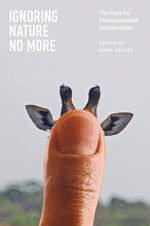
This collection of diverse essays is the first book devoted to compassionate conservation, a growing global movement that translates discussions and concerns about the well-being of individuals, species, populations, and ecosystems into action. Written by leading scholars in a host of disciplines, including biology, psychology, sociology, social work, economics, political science, and philosophy, as well as by locals doing fieldwork in their own countries, the essays combine the most creative aspects of the current science of animal conservation with analyses of important psychological and sociocultural issues that encourage or vex stewardship. The contributors tackle topics including the costs and benefits of conservation, behavioral biology, media coverage of animal welfare, conservation psychology, and scales of conservation from the local to the global. Taken together, the essays make a strong case for why we must replace our habits of domination and exploitation with compassionate conservation if we are to make the world a better place for nonhuman and human animals alike.
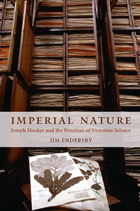
By analyzing Hooker’s career, Endersby offers vivid insights into the everyday activities of nineteenth-century naturalists, considering matters as diverse as botanical illustration and microscopy, classification, and specimen transportation and storage, to reveal what they actually did, how they earned a living, and what drove their scientific theories. What emerges is a rare glimpse of Victorian scientific practices in action. By focusing on science’s material practices and one of its foremost practitioners, Endersby ably links concerns about empire, professionalism, and philosophical practices to the forging of a nineteenth-century scientific identity.
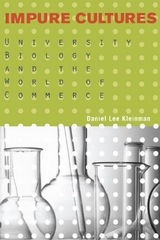
How are the worlds of university biology and commerce blurring? Many university leaders see the amalgamation of academic and commercial cultures as crucial to the future vitality of higher education in the United States. In Impure Cultures, Daniel Lee Kleinman questions the effect of this blending on the character of academic science.
Using data he gathered as an ethnographic observer in a plant pathology lab at the University of Wisconsin–Madison, Kleinman examines the infinite and inescapable influence of the commercial world on biology in academia today. Contrary to much of the existing literature and common policy practices, he argues that the direct and explicit relations between university scientists and industrial concerns are not the gravest threat to academic research. Rather, Kleinman points to the less direct, but more deeply-rooted effects of commercial factors on the practice of university biology. He shows that to truly understand research done at universities today, it is first necessary to explore the systematic, pervasive, and indirect effects of the commercial world on contemporary academic practice.
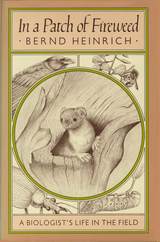
Why would a grown man chase hornets with a thermometer, paint whirligig beetles bright red, or track elephants through the night to fill trash bags with their prodigious droppings? Some might say—to advance science. Bernd Heinrich says—because it’s fun.
Heinrich, author of the much acclaimed Bumblebee Economics, has been playing in the wilds of one continent or another all his life. In the process, he has become one of the world’s foremost physiological ecologists. With In a Patch of Fireweed, he will undoubtedly become one of our foremost writers of popular science.
Part autobiography, part case study in the ways of field biology, In a Patch of Fireweed is an endlessly fascinating account of a scientist’s life and work. For the author, it is an opportunity to report not just his results but the curiosity, humor, error, passion, and competitiveness that feed into the process of discovery. For the reader, it is simply a delight, a rare chance to share the perceptions of an unusual mind fully in tune with the inner workings of nature. Before his years of research in the woodlands and deserts of North America, the New Guinea highlands, and the plains of East Africa, Heinrich had a sense of the wild that few people in this century can know. He tells the whole story, from his refugee childhood hidden in a German forest, eating mice fried in boar fat, to his ongoing research in the woods surrounding his cabin in Maine.
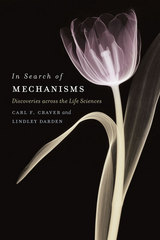

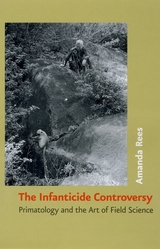
Infanticide in the natural world might be a relatively rare event, but as Amanda Rees shows, it has enormously significant consequences. Identified in the 1960s as a phenomenon worthy of investigation, infanticide had, by the 1970s, become the focus of serious controversy. The suggestion, by Sarah Hrdy, that it might be the outcome of an evolved strategy intended to maximize an individual’s reproductive success sparked furious disputes between scientists, disagreements that have continued down to the present day.
Meticulously tracing the history of the infanticide debates, and drawing on extensive interviews with field scientists, Rees investigates key theoretical and methodological themes that have characterized field studies of apes and monkeys in the twentieth century. As a detailed study of the scientific method and its application to field research, The Infanticide Controversy sheds new light on our understanding of scientific practice, focusing in particular on the challenges of working in “natural” environments, the relationship between objectivity and interpretation in an observational science, and the impact of the public profile of primatology on the development of primatological research. Most importantly, it also considers the wider significance that the study of field science has in a period when the ecological results of uncontrolled human interventions in natural systems are becoming ever more evident.



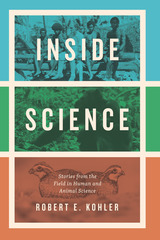
Resident observing takes place across a range of sciences, from anthropology and sociology to primatology, wildlife ecology, and beyond. What makes it special, Kohler argues, is the direct access it affords scientists to the contexts in which their subjects live and act. These scientists understand their subjects not by keeping their distance but by living among them and engaging with them in ways large and small. This approach also demonstrates how science and everyday life—often assumed to be different and separate ways of knowing—are in fact overlapping aspects of the human experience. This story-driven exploration is perfect for historians, sociologists, and philosophers who want to know how scientists go about making robust knowledge of nature and society.
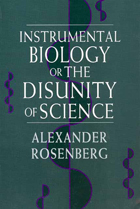
In Instrumental Biology, or the Disunity of Science, Alexander Rosenberg argues that while physics and chemistry can develop laws that reveal the structure of natural phenomena, biology is fated to be a practical, instrumental discipline. Because of the complexity produced by natural selection, and because of the limits on human cognition, scientists are prevented from uncovering the basic structure of biological phenomena. Consequently, biology and all of the disciplines that rest upon it—psychology and the other human sciences—must aim at most to provide practical tools for coping with the natural world rather than a complete theoretical understanding of it.
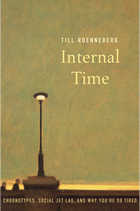
Winner of a British Medical Association Book Award
A Brain Pickings Best Science Book of the Year
Early birds and night owls are born, not made. Sleep patterns may be the most obvious manifestation of the highly individualized biological clocks we inherit, but these clocks also regulate bodily functions from digestion to hormone levels to cognition. Living at odds with our internal timepieces, Till Roenneberg shows, can make us chronically sleep deprived and more likely to smoke, gain weight, feel depressed, fall ill, and fail geometry. By understanding and respecting our internal time, we can live better.
“Internal Time is a cautionary tale—actually a series of 24 tales, not coincidentally. Roenneberg ranges widely from the inner workings of biological rhythms to their social implications, illuminating each scientific tutorial with an anecdote inspired by clinical research...Written with grace and good humor, Internal Time is a serious work of science incorporating the latest research in chronobiology...[A] compelling volume.”
—A. Roger Ekirch, Wall Street Journal
“This is a fascinating introduction to an important topic, which will appeal to anyone who wishes to delve deep into the world of chronobiology, or simply wonders why they struggle to get a good night’s sleep.”
—Richard Wiseman, New Scientist
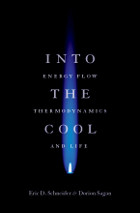
Working from the precept that "nature abhors a gradient," Into the Cool details how complex systems emerge, enlarge, and reproduce in a world tending toward disorder. From hurricanes here to life on other worlds, from human evolution to the systems humans have created, this pervasive pull toward equilibrium governs life at its molecular base and at its peak in the elaborate structures of living complex systems. Schneider and Sagan organize their argument in a highly accessible manner, moving from descriptions of the basic physics behind energy flow to the organization of complex systems to the role of energy in life to the final section, which applies their concept of energy flow to politics, economics, and even human health.
A book that needs to be grappled with by all those who wonder at the organizing principles of existence, Into the Cool will appeal to both humanists and scientists. If Charles Darwin shook the world by showing the common ancestry of all life, so Into the Cool has a similar power to disturb—and delight—by showing the common roots in energy flow of all complex, organized, and naturally functioning systems.
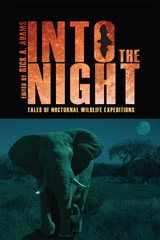
Contributors tell of confronting North American bears, cougars, and rattlesnakes; suffering red ctenid spider bites in the tropical rain forest; swimming through layers of feeding-frenzied hammerhead sharks in the Galapagos; evading the wrath of African bull elephants in South Africa; and delighting in the curious and gentle nature of foxes and unconditional acceptance by a family of owls. They describe “fire in the sky” across a treeless tundra, a sea ablaze with bioluminescent algae, nighttime earthquakes on the Pacific Rim, and hurricanes and erupting volcanoes on a Caribbean island.
Into the Night reveals rare and unexpected insights into nocturnal field research, illuminating experiences, discoveries, and challenges faced by intrepid biologists studying nature’s nightly marvels across the globe. This volume will be of interest to scientists and general readers alike.
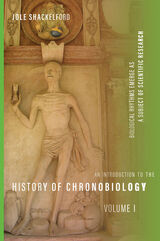
In three volumes, historian Jole Shackelford delineates the history of the study of biological rhythms—now widely known as chronobiology—from antiquity into the twentieth century. Perhaps the most well-known biological rhythm is the circadian rhythm, tied to the cycles of day and night and often referred to as the “body clock.” But there are many other biological rhythms, and although scientists and the natural philosophers who preceded them have long known about them, only in the past thirty years have a handful of pioneering scientists begun to study such rhythms in plants and animals seriously. Tracing the intellectual and institutional development of biological rhythm studies, Shackelford offers a meaningful, evidence-based account of a field that today holds great promise for applications in agriculture, health care, and public health. Volume 1 follows early biological observations and research, chiefly on plants; volume 2 turns to animal and human rhythms and the disciplinary contexts for chronobiological investigation; and volume 3 focuses primarily on twentieth-century researchers who modeled biological clocks and sought them out, including three molecular biologists whose work in determining clock mechanisms earned them a Nobel Prize in 2017.
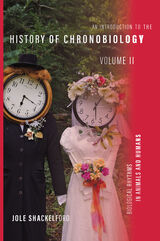
In three volumes, historian Jole Shackelford delineates the history of the study of biological rhythms—now widely known as chronobiology—from antiquity into the twentieth century. Perhaps the most well-known biological rhythm is the circadian rhythm, tied to the cycles of day and night and often referred to as the “body clock.” But there are many other biological rhythms, and although scientists and the natural philosophers who preceded them have long known about them, only in the past thirty years have a handful of pioneering scientists begun to study such rhythms in plants and animals seriously. Tracing the intellectual and institutional development of biological rhythm studies, Shackelford offers a meaningful, evidence-based account of a field that today holds great promise for applications in agriculture, health care, and public health. Volume 1 follows early biological observations and research, chiefly on plants; volume 2 turns to animal and human rhythms and the disciplinary contexts for chronobiological investigation; and volume 3 focuses primarily on twentieth-century researchers who modeled biological clocks and sought them out, including three molecular biologists whose work in determining clock mechanisms earned them a Nobel Prize in 2017.
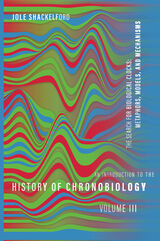
In three volumes, historian Jole Shackelford delineates the history of the study of biological rhythms—now widely known as chronobiology—from antiquity into the twentieth century. Perhaps the most well-known biological rhythm is the circadian rhythm, tied to the cycles of day and night and often referred to as the “body clock.” But there are many other biological rhythms, and although scientists and the natural philosophers who preceded them have long known about them, only in the past thirty years have a handful of pioneering scientists begun to study such rhythms in plants and animals seriously. Tracing the intellectual and institutional development of biological rhythm studies, Shackelford offers a meaningful, evidence-based account of a field that today holds great promise for applications in agriculture, health care, and public health. Volume 1 follows early biological observations and research, chiefly on plants; volume 2 turns to animal and human rhythms and the disciplinary contexts for chronobiological investigation; and volume 3 focuses primarily on twentieth-century researchers who modeled biological clocks and sought them out, including three molecular biologists whose work in determining clock mechanisms earned them a Nobel Prize in 2017.

The search for effective immunization against pneumonia was a principal avenue of investigation before the advent of The search for effective immunization against pneumonia was a principal avenue of investigation before the advent of antibiotics made such an effort appear unnecessary. Recently, however, the limitations of antibiotic therapy have become increasingly evident, and interest has been renewed in many of the threads of research which have all but lain dormant since the 1930s. In 1978, a pneumococcal vaccine was licensed by the F.D.A., merely as evidence of a renaissance in pneumococcal research which is now taking place. We are pleased to be reissuing two classic volumes which provide a unique repository of data amassed prior to the time when penicillin precluded further exhaustive observation of the unmodified infection.
Heffron’s Pneumonia is a compilation and analysis of all aspects of pneumococcal disease, including the distribution of pneumococcal types, the pathology of pneumonia, its epidemiology, symptoms, signs, complications, diagnosis, prognosis, and immunology. With a complete cross-reference index and an extensive bibliography, Heffron’s book is still the definitive work on pneumococcal infections.
White’s Biology of Pneumococcus contains the wealth of information acquired in the first six decades following the discovery of the pneumococcus. With a bibliography drawing together some 1593 papers, White’s volume is of unquestionable significance as a historical record and the basis for further study.
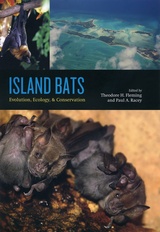
The second largest order of mammals, Chiroptera comprises more than one thousand species of bats. Because of their mobility, bats are often the only native mammals on isolated oceanic islands, where more than half of all bat species live. These island bats represent an evolutionarily distinctive and ecologically significant part of the earth’s biological diversity.
Island Bats is the first book to focus solely on the evolution, ecology, and conservation of bats living in the world’s island ecosystems. Among other topics, the contributors to this volume examine how the earth’s history has affected the evolution of island bats, investigate how bat populations are affected by volcanic eruptions and hurricanes, and explore the threat of extinction from human disturbance. Geographically diverse, the volume includes studies of the islands of the Caribbean, the Western Indian Ocean, Micronesia, Indonesia, the Philippines, and New Zealand.
With its wealth of information from long-term studies, Island Bats provides timely and valuable information about how this fauna has evolved and how it can be conserved.

“The greenhouse effect is us, and it is specifically us in the Western world.” This is one of the messages at the beginning of Anita Gordon and David Suzuki’s startling view of our future on Earth. More than any other time in history, the 1990s have marked a turning point for human civilization. Not only are we facing ecological disasters that will affect our ability to survive, but the crisis is forcing us to reexamine the entire value system that has governed our lives for the past two thousand years.
Gordon and Suzuki warn us of the transition we will need to make if we are to arrive safely in the next century. More than a book on the environment, this is a book about us as a species: our shortsightedness, our failure to read the warnings, our inability to grasp the significance of our actions-and the tough decisions we have to make in order to save ourselves.
The power of the book lies in the consensus of the many voices, those of scientists and other scholars, that speak through it. The components of our predicament—global warming, soil erosion, acid rain, species depletion, ozone damage, rainforest destruction, overpopulation—are quantified with authority. And never before has such a strong consensus been expressed in a single warning. The message we receive is that our actions are taking place in a political and economic world that demands radical change.
In an effort to counteract this blueprint for disaster, Gordon and Suzuki present a resounding rebuttal of technological optimism and the belief that continued economic growth is a prerequisite for environmental reform. The intellectual fog of sustainable development is incisively dispelled, and in its place the authors suggest practical contributions that individuals as well as governments can make toward creating a “conserver society.”
READERS
Browse our collection.
PUBLISHERS
See BiblioVault's publisher services.
STUDENT SERVICES
Files for college accessibility offices.
UChicago Accessibility Resources
home | accessibility | search | about | contact us
BiblioVault ® 2001 - 2024
The University of Chicago Press









